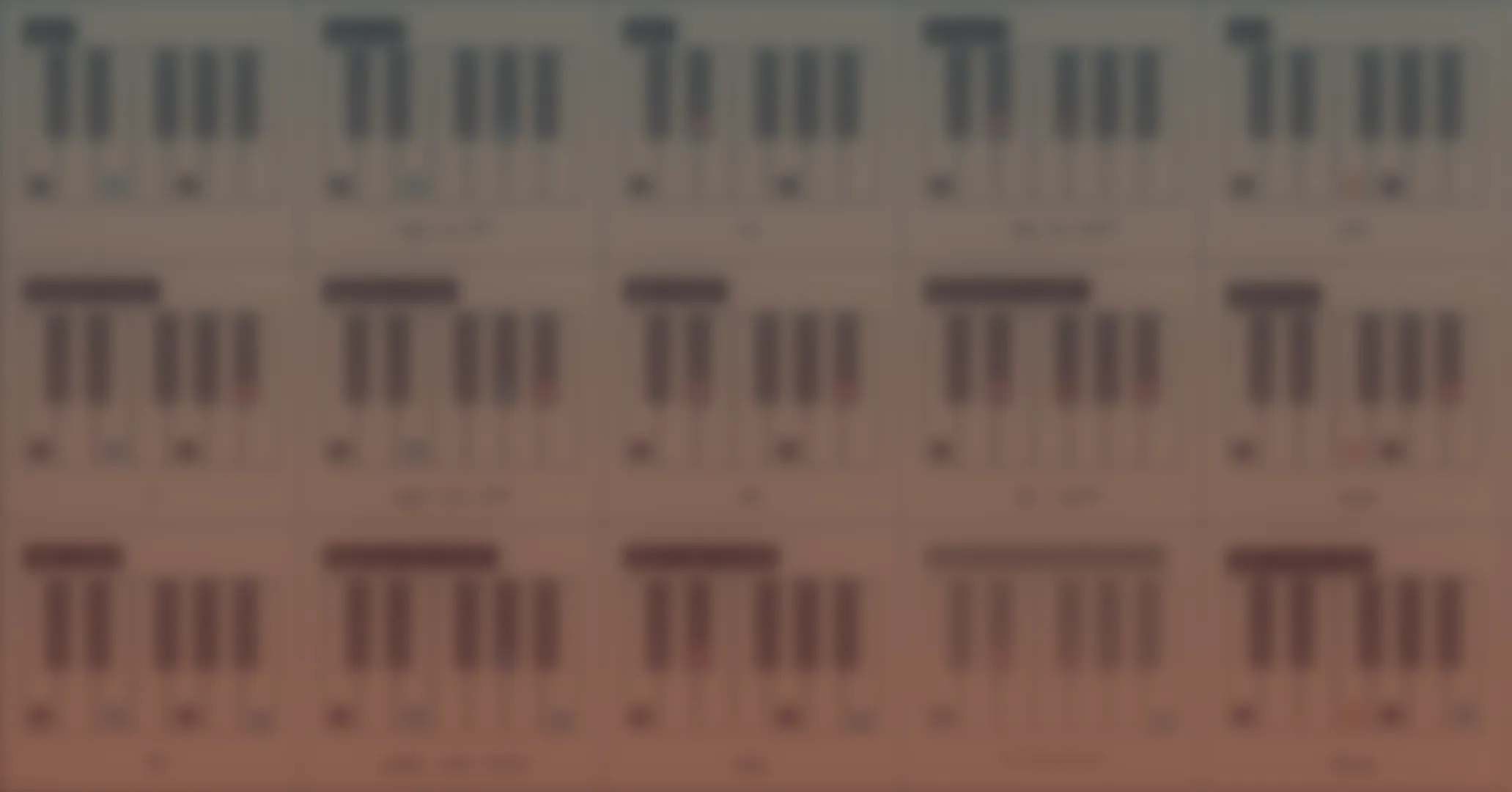Contents
Over the past few sessions, I introduced a variety of new chords derived from major/minor chords. This time I’m gonna again summarize them.
Each session primarily focused on introducing their practical use, but here, we’ll compare the chord components, variation in chord symbols and alternative names.
1. Reviewing Chord Components
First, let’s review the chords we introduced.
Triads
These variation chords are often used on V, so I used G as the root. Now that we understand the mechanism, these chord names don’t seem so intimidating anymore.
Seventh Chords
As for seventh chords, There are choices of adding whether major seventh or minor seventh, and there is also the option of diminished seventh.
If you ever get confused, it should be easy to return to the state of the seventh chord. Ultimately, it’s the difference between “Δ7” and “7,” a barrier that we’ve already overcome in Chapter II. Breaking down the name and the sound into “fundamental chord quality” + “modification” makes it easier to understand.
However, only “dim7” doesn’t hint at its specific chord tones at all, so you’ll have to just memorize it. The key memorization points for dim7 are “all equally spaced by 3 semitones” and “two pairs of tritones.”
Theoretically, there are still other combinations like “minor-major seventh sharp-five”, “dominant seventh flat-five” etc, but those are more about combining parts, so I omit introducing them individually.
Not As Many As Expected
Still remaining are the fields of “slash chords” and “tension chords,” which I just roughly introduced in Chaptar I. However, the variations in chords created by changing notes are actually just these: four types of seventh chords, altering 5th or shifting 3rd. It is merely the combination of these small elements that gives rise to the myriad types of chord names.
2. Various Other Names
However, what complicates the system actually comes from here. Each chord has a couple of alternatative names and symbols. Different notations arise due to changes in eras or differences in schools, and once they are born, it’s not easily abolished or unified. Probably it is the very cause of the complexity in chord theory. This page summarizes the notation of modified chord names.
aug/dim
In the article of sharp-fifth and minor flat-fifth, I introduced that each chord has alternative names, “augmented chord” and “diminished” chord. Although not mentioned there, they also have chord symbols “aug” and “dim” as alternative names.
It’s evident when seen on a piano roll that these four are connected by a half-step difference in sequence.
Major, minor, aug, dim. The traditional classical approach defines these four as “basic triad quartet“, and the concept is seen in various popular music theory books too.
The names “augmented chord” and “diminished chord” have been in use long before the establishment of the modern chord naming system. Historically, they precede the later systematic names like “sharp-fifth” and “flat-fifth”.
 F. A. GORE OUSELEY “Principles of Harmony” p11 (1868)
F. A. GORE OUSELEY “Principles of Harmony” p11 (1868)There are many people preferring “aug/dim” rather than systematic symbols “♯5/♭5”, so memorizing these would be valuable for communication.
Augmented and Seventh Chords
Then, the seventh chord versions of sharp-fifth also receives an alternative name with “aug”.
This results in the “Augmented Major Seventh” and the “Augmented Seventh.” This should be reasonably understandable based on our previous discussions.
Diminished and Seventh Chords
The alternative name for the minor flat-fifth is “diminished”. Come to think of it, the name of the chord we covered last time was “Diminished Seventh“, right? Actually, the name of this chord comes from “diminished triad turned into a seventh chord”.
This dim7 chord is created by adding a “diminished seventh” interval on the “diminished triad”.
System Inconsistensy
But, I feel like I’m forgetting something… “Diminished” is an alias for the minor flat-fifth…
Well yes, as for the “seventh chord version of minor flat-fifth”, first there’s the “Minor Seventh Flat-Fifth.”
The rule so far has been “If you add a minor seventh (10 semitones), add 7 to the symbol.” Following this, this chord would seem to become “dim7,” but in reality, it isn’t the case. Why is the inconsistency present here?
Of course, there’s a reason, a reason that everyone would agree upon if they heard it. It’s because…it’s been called that way since long long ago.
As mentioned previously, the diminished Seventh is the “king” of unusual chords in the music theory world. Its uniqueness was already recognized in theory books from around 1800, and it was named “Diminished Seventh.” This was a time when there is no idea of giving regular chord names logically to all chords1.
It was much later when the chord naming system we use today was established. By then, it was too late to change the situation…
Half Diminished Seventh
But the pitiful one is the “minor seventh flat-fifth chord,” burdened with an exceedingly lengthy name. Upon reevaluating the chord notes, the minor seventh flat-fifth chord exhibits half the “diminished” quality when compared to the diminished seventh chord.
Therefore, the “diminished” quality being half that of the diminished seventh, this chord was given a new nickname, Half-Diminished Seventh.
It might seem somewhat patchwork, but ultimately, music theory is something developed gradually by both developers and users. The standards take time to evolve as they are crafted by humans, which is why they might not become entirely systematic.




